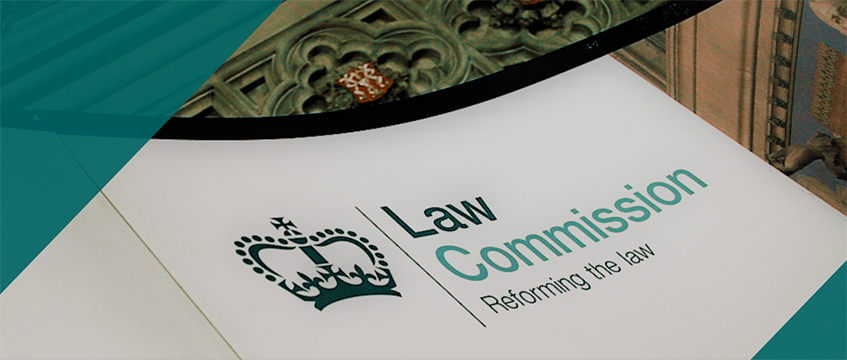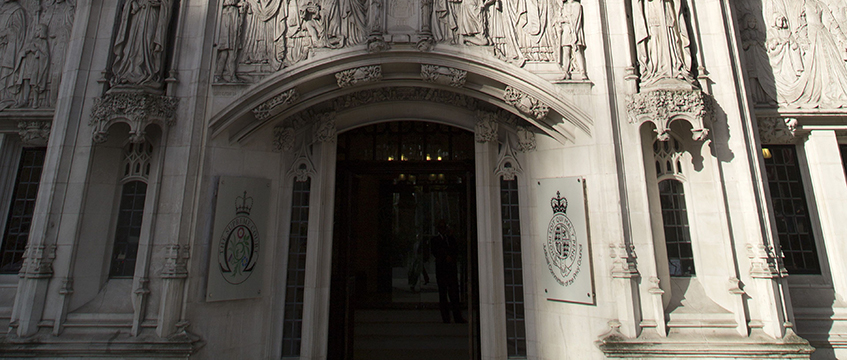Neighbour dispute – Right of way – Appellant owners applying to Land Registry to lessen width of right of way shown on registered title in favour of respondent neighbour – Deputy adjudicator allowing application – Decision reversed on first appeal – Whether permission to be granted for second appeal – Whether judge erring in overturning deputy adjudicator’s decision – Second appeal allowed
The appellants and the respondent owned neighbouring properties. The respondent’s property enjoyed a right of way over the appellants’ property in the terms reserved by a conveyance of 1898. The appellants applied to the Land Registry to alter the filed plan that showed the right of way on the ground that the area that it showed was almost twice as wide as the track over which the respondent was legally entitled to pass under the 1898 conveyance. The respondent disputed the appellants’ interpretation of the right of way and objected to their application, which was referred to a deputy Land Registry adjudicator.
The deputy adjudicator allowed the application on the ground that the filed plans attached to both the appellants’ and the respondent’s registered titles were erroneous because the 1898 conveyance did not reserve a right of way of the width shown. He directed that part of the disputed land be excluded from the right of way as shown on the filed plans, but that another part should be included because a prescriptive right of way had been established.
The respondent appealed to the High Court. Allowing the appeal, the judge found that although the deputy adjudicator had correctly directed himself in law on the approach to the construction of the 1898 conveyance, his conclusion as to the area over which the right had been granted in 1898 was not supported by the evidence. The appellants sought permission for a second appeal, which was initially refused on the papers. On a renewed application, a single hearing was held to determine the issue of permission and, if it were granted, the substantive appeal.
Held: Permission to appeal was granted and the appeal was allowed.
If possible, disagreements between neighbours over rights of way, boundaries and other such matters should be settled without going to court and professional advisers had a duty to warn their clients at an early stage about the downside, even for a successful party, of neighbour litigation. One of the parties would be ordered to pay considerable legal costs. The cost and stress of a court case would often result in the further deterioration of already damaged relationships and the parties might find that the litigation had blighted their properties as well as their lives.
Where a neighbour dispute did go to court, it might, even if trivial in nature, prove potentially ruinous in financial and human terms for both sides. The dispute would be likely to look relatively unimportant to everyone except the parties; in the civil justice system, the parties to those local property disputes were entitled to have them decided according to the same high standards as parties in all cases.
Although the CPR imposed stringent requirements for a second appeal, it was possible to find a “compelling reason” for a second appeal in the instant case. At two levels of decision on the way to the Court of Appeal, opinion had been divided on the effect of the conveyance expressly reserving the right of way in dispute. Although a “real prospect of success” was not the test for granting permission for a second appeal, it might well become clear, with the benefit of full argument from both parties, that the first instance decision was correct and that the overturning of it on the first appeal could not possibly be justified. In such a case, the refusal of permission for a second appeal, although bringing earlier finality to the litigation, would not produce a correct or fair outcome.
The deputy adjudicator had been the fact-finding tribunal and had had the relevant expertise to perform that role. Although Land Registry adjudicators might sometimes be mistaken, they were usually more experienced than the appellate courts at deciding the kind of questions with which they were faced and a measure of weighed deference should be accorded to their findings and conclusions in their reasoned decisions. Although the judge on the first appeal had had some grounds for differing from the deputy adjudicator’s treatment of aspects of the evidence, concerning matters on the ground at the time of the 1898 conveyance, the judge was hearing an appeal not retrying the case. He had gone too far in concluding that there was insufficient evidence for the deputy adjudicator’s decision that a mistake had been made, when registering the titles of the parties, as to the width of the right of way shown thereon. That was a decision that the deputy adjudicator, as the fact-finding tribunal, had been entitled to reach on the construction of the conveyance, in the context of a reasonable assessment of all the evidence of the objective contemporaneous circumstances.
Accordingly, permission for a second appeal would be granted; the appeal was allowed on the ground that the first appeal judge had had no valid grounds for overturning the decision of the deputy adjudicator and had been plainly wrong to do so.
William Hansen (instructed by Greens Solicitors, of Ludlow) appeared for the appellant; David Stockill (instructed by Norris & Miles, of Tenbury Wells) appeared for the respondent.
Sally Dobson, barrister










